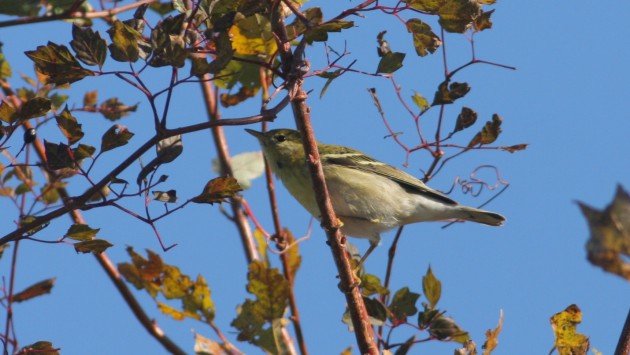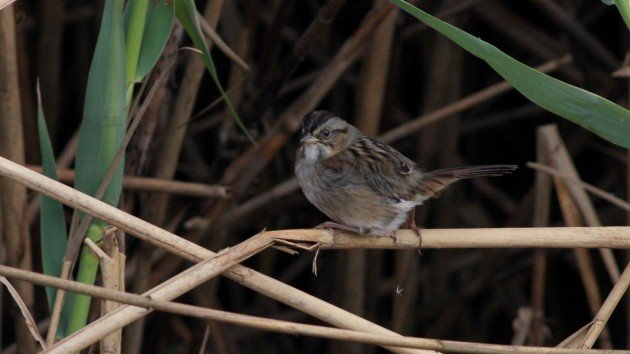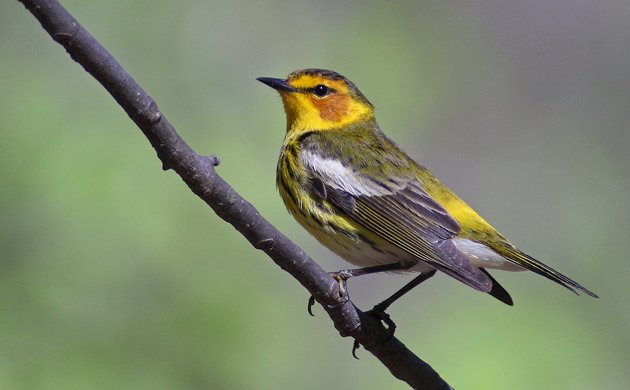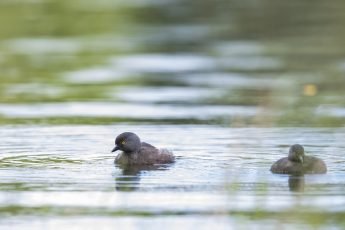This past weekend I headed out to eastern North Carolina with a group of friends to try our hand at a Rarity Roundup. These events, and their rise in the Mid-Atlantic in late fall, have been interesting to me for quite a while. In North Carolina, at least, the entire eastern part of the state is sparsely populated and under-birded, aside from the well-known an well-trod Outer Banks circuit, but even that popular vacation site is left mostly untouched aside from a few locals in November, which tends to be the peak period for vagrant finding in much of the east. Our little group set out to remedy that, by focusing on the southern Albermarle peninsula and the areas around Beaufort and Pamlico counties. These are parts of the state that are unknown to many aside from duck hunters and residents who have vacated for more populous areas.
I’ll make a long story short, because trip reports can be tedious, and say that our attempts to find state megas failed. Our two groups turned up a handful of lingering migrants – a pair of Blackpoll Warblers here, a Stilt Sandpiper there – and some locally uncommon birds like Lincoln’s Sparrow, but nothing that would cause rabid state listers to do little more than nod knowingly at our reports. But many of us racked up lots of county ticks from underbirded counties, and a great time was had by all in the birding and fellowship.
 A lingering Blackpoll Warbler on the Lake Mattamuskeet NWR causeway was my group’s bird of the day.
A lingering Blackpoll Warbler on the Lake Mattamuskeet NWR causeway was my group’s bird of the day.
The next day we focused on scouting underbirded counties, learning that these counties were probably underbirded for a reason. In any case, that’s the sort of information that you do like to find out for yourself rather than hearing about it second hand. We spent a lot of time in the morning at a wetlands mitigation site owned by the massive PotashCorp, whose mines have destroyed a number of estuarine marshes along the Pamlico River. The wetlands site is intended to mitigate that destruction, but there’s no way a bunch of converted farmland can ever be as productive as the saltmarsh they’re mining. But anyway…
The site was still pretty productive with hundreds of sparrows, mostly Swamp, but also a single Le Conte’s Sparrow that only one of our group saw well. We also had good looks at a “Cling” Rail, an individual that showed characteristics of both King and Clapper. Either would have been a new species for the trip, but no one was comfortable making the case either way. So it goes with rails in coastal North Carolina.
 Swamp Sparrows are abundant winter residents in eastern NC.
Swamp Sparrows are abundant winter residents in eastern NC.
Pamlico County hosts massive waterfowl impoundments that we found completely impossible to access without a boat, so the only ducks we saw were great clouds picking up, causing great excitement among the birding group, and settling down out of sight. Frustrating for sure, but some things stood out. A large flock of American White Pelicans flying through distant heat haze made a case for the birds of the weekend, but they’ve been increasing in NC in recent years.
Before going in our three priorities were 1) find rarities 2) find county ticks and 3) have a good time. Number 1 may have been largely a bust, but 2 and 3 were more than met. I think all involved are looking forward to next year, and maybe we’ll have better luck with the rarities.






 New writers welcome – please contact us for details.
New writers welcome – please contact us for details.

















I guess we were having a better time with out rarity roundup here in Barbados than you did in eastern North Carolina Nate. Click the link to read about our first week of November, what us local birder call Rarity Month.
http://100barbadosbirds.blogspot.com/2014/11/rare-birds-month.html
How I love birds, makes me feel free. But thanksgiving is upcoming, Turkeys are going to be at risk for there lives.